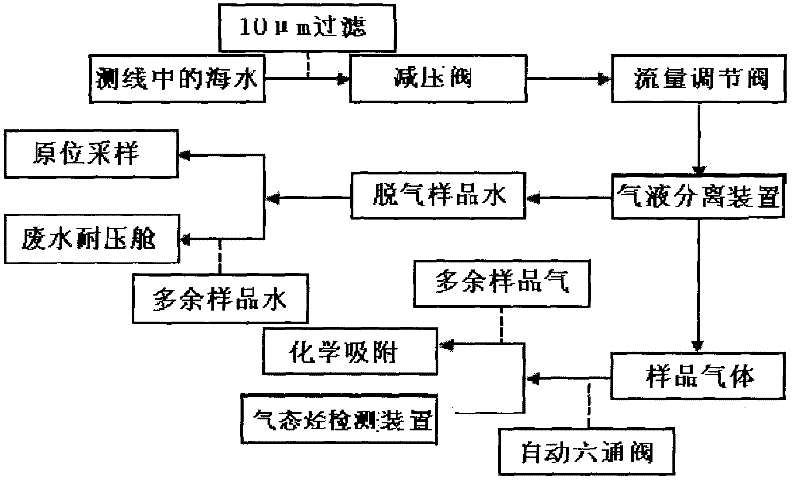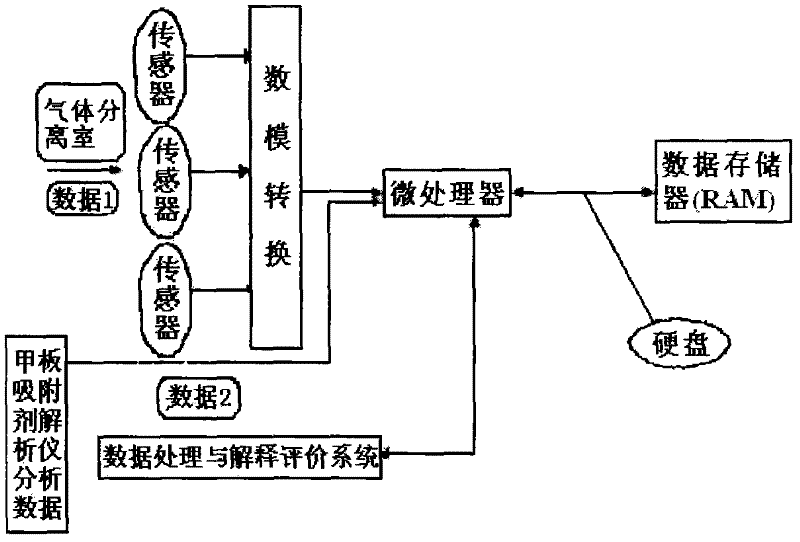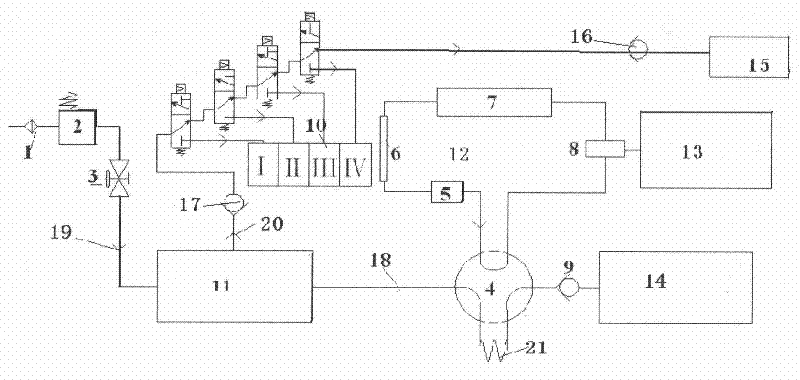An in-situ detection system for methane concentration in seawater
A technology for in-situ detection and methane concentration, which is applied in measurement devices, instruments, scientific instruments, etc., can solve the problems of inability to quantitatively obtain the gas volume and can not meet the requirements, and achieve the effect of light weight, low cost and accurate data.
- Summary
- Abstract
- Description
- Claims
- Application Information
AI Technical Summary
Problems solved by technology
Method used
Image
Examples
Embodiment Construction
[0055] The present invention will be described in detail below in conjunction with the accompanying drawings and embodiments. figure 1 It is a flow block diagram of an in-situ detection system for methane concentration in seawater of the present invention. figure 2 It is a block diagram of the analog-to-digital conversion transmission principle of the detection system.
[0056] From image 3 As can be seen in the figure, the system consists of a seawater filter 1, a pressure reducing valve 2, a flow regulating valve 3, a gas-liquid separation device 11, an automatic sampling six-way valve 4, a gaseous hydrocarbon detection device 12, an analog-to-digital converter 13, a sample The water collector 10, the waste sample pressure-resistant cabin 15, and the chemical adsorption equipment 14 are assembled by connecting pipelines; and they are jointly installed in a pressure-resistant cabin; as image 3 , Figure 4 shown.
[0057] When the detection system is dragged and dropped...
PUM
| Property | Measurement | Unit |
|---|---|---|
| diameter | aaaaa | aaaaa |
| power consumption | aaaaa | aaaaa |
Abstract
Description
Claims
Application Information
 Login to View More
Login to View More - R&D
- Intellectual Property
- Life Sciences
- Materials
- Tech Scout
- Unparalleled Data Quality
- Higher Quality Content
- 60% Fewer Hallucinations
Browse by: Latest US Patents, China's latest patents, Technical Efficacy Thesaurus, Application Domain, Technology Topic, Popular Technical Reports.
© 2025 PatSnap. All rights reserved.Legal|Privacy policy|Modern Slavery Act Transparency Statement|Sitemap|About US| Contact US: help@patsnap.com



